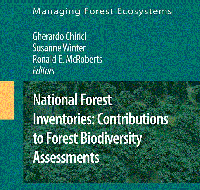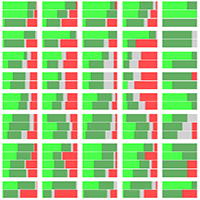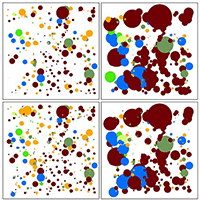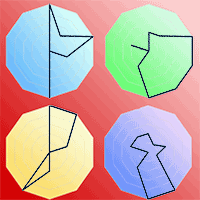
An approach to measuring biodiversity and its use in analysing the effect of nitrogen deposition on woodland butterfly populations in the Netherlands
iForest - Biogeosciences and Forestry, Volume 2, Issue 1, Pages 46-48 (2009)
doi: https://doi.org/10.3832/ifor0487-002
Published: Jan 21, 2009 - Copyright © 2009 SISEF
Short Communications
Collection/Special Issue: Cost Action E29 Meeting 2008 - Istanbul (Turkey)
Future Monitoring and Research Needs for Forest Ecosystems
Guest Editors: Marcus Schaub (WSL, Birmensdorf, CH)
Abstract
The current use of the term biodiversity is problematic in that it is frequently reduced to a paradigm of species richness through the interpretation of the CBD definition that identifies variability as the operative factor. Species richness actually conveys the least amount of information of all of the possible indices that could be used so a data treatment process has been established whereby taxonomic groups that have been sampled in a well-structured way can yield data that can be far more informative. An example using “biodiversity quality” indices for macrofungi following entry into a bespoke computer programme (Fungib) shows that these data can be established and they are capable of being assessed for statistical difference either between sites or over time. A case study showing how this approach can provide information on the mechanism whereby nitrogen deposition affects butterflies is given. It is clear that this approach can be of considerable use in establishing progress towards achieving the 2010 target of reducing the rate of loss of biodiversity by 2010 established by the CBD.
Keywords
Biodiversity quality, Butterflies, Macrofungi, Nitrogen critical load
Authors’ Info
Authors’ address
Water and Environmental Management Research Centre, Department of Civil Engineering, Queen’s Building, University of Bristol, Bristol BS8 1TR (United Kingdom)
Ecosulis Ltd, The Rickyard Newton St Loe, Bath BA2 9BT (United Kingdom)
NAGREF-FRI, GR-570 06, Vassilika (Greece)
Corresponding author
Paper Info
Citation
Feest A, Spanos K (2009). An approach to measuring biodiversity and its use in analysing the effect of nitrogen deposition on woodland butterfly populations in the Netherlands. iForest 2: 46-48. - doi: 10.3832/ifor0487-002
Academic Editor
Marcus Schaub
Paper history
Received: Mar 29, 2008
Accepted: Dec 09, 2008
First online: Jan 21, 2009
Publication Date: Jan 21, 2009
Publication Time: 1.43 months
Copyright Information
© SISEF - The Italian Society of Silviculture and Forest Ecology 2009
Open Access
This article is distributed under the terms of the Creative Commons Attribution-Non Commercial 4.0 International (https://creativecommons.org/licenses/by-nc/4.0/), which permits unrestricted use, distribution, and reproduction in any medium, provided you give appropriate credit to the original author(s) and the source, provide a link to the Creative Commons license, and indicate if changes were made.
Web Metrics
Breakdown by View Type
Article Usage
Total Article Views: 88981
(from publication date up to now)
Breakdown by View Type
HTML Page Views: 79970
Abstract Page Views: 3367
PDF Downloads: 4553
Citation/Reference Downloads: 79
XML Downloads: 1012
Web Metrics
Days since publication: 6169
Overall contacts: 88981
Avg. contacts per week: 100.97
Citation Metrics
Article Citations
Article citations are based on data periodically collected from the Clarivate Web of Science web site
(last update: Mar 2025)
Total number of cites (since 2009): 5
Average cites per year: 0.29
Publication Metrics
by Dimensions ©
Articles citing this article
List of the papers citing this article based on CrossRef Cited-by.
References
Indicators for biodiversity in agricultural landscapes: a pan-European study. Journal of Applied Ecology 45: 141-150.
CrossRef | Gscholar
Getting the best out of data. Developing best practice in surveying and reporting. Proceedings of the Institute of Ecology and Environmental Management, 18 April 2007, London, UK, pp. 51-58.
Gscholar
Effects of biodiversity on ecosystem functioning: a consensus of current knowledge. Ecological Monographs 75 (1): 3-35.
CrossRef | Gscholar

















